Spider plants (also known as Chlorophytum comosum) are an easy houseplant to take care of and you can also plant the offshoots to grow even more spider plants for your space!
Spider plants have arched ribbon-like leaves that have variations of green or white and green stripes and they are especially pretty to use in a hanging basket display. They are one of the more popular varieties of house plants and they can take quite a bit of neglect so they are good for beginners to practice their green thumbs on as well.
Related: Learn to Care for Pilea Plants, Fiddle Leaf Figs, Golden Pothos, Snake Plants, Rubber Trees, and String of Pearls Plants.

Why are they called Spider plants? Spider plants are native to the coast of South Africa and during the warmer summer months they can produce small white flowers at the end of a long stem (called a “pup”) that resemble small spiders—these little spiders can be replanted to produce another spider plant!
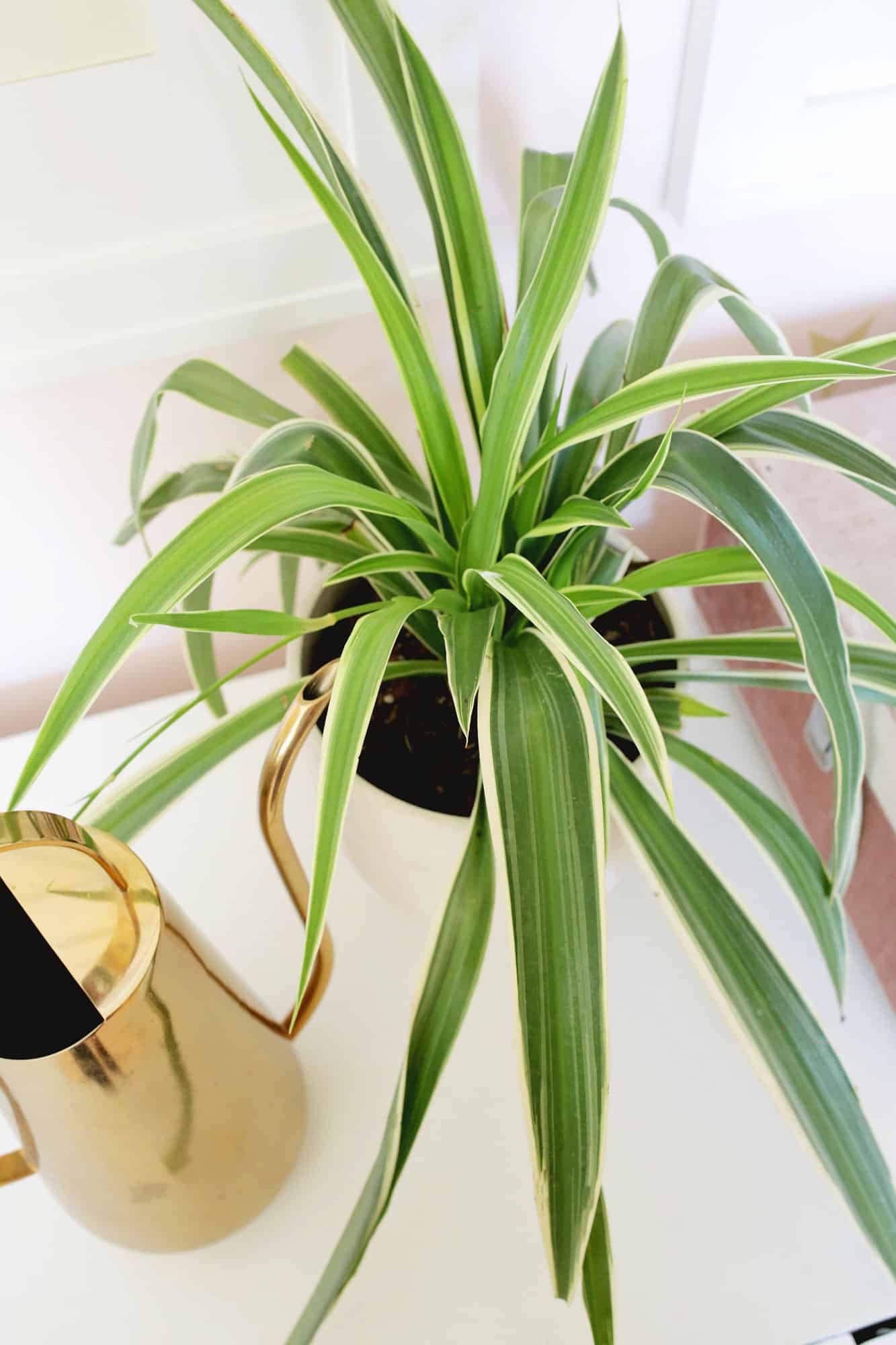
Types of Spider Plants:
- Chlorophytum comosum ‘Variegatum’: This kind has cream or white margins of the leaf with a dark green stripe down the middle and the long stems that grow from it are green.
- Chlorophytum comosum ‘Vittatum’: This variety’s leaves have a white stripe down the center flanked by green margins and the long stems are white.
- Chlorophytum comosum ‘Bonnie’: This spider plant grows more compact and has more curly leaves with green outsides and a cream center stripe. Rather than white flowers, its flowers are yellow.
How Often Should I Water Spider Plants?
You’ll want the soil to start to dry out between waterings as spider plants like moist but not soggy soil. Too much water can cause root rot and kill the plant. Water your plant thoroughly and then check it a few days later by sticking a finger down into the soil to check the dampness level. Once the dirt feels only slightly moist it’s time to water again.
Spider plants can be more sensitive to fluoride and chlorine in tap water, so if you really want to pamper your plant you can use rainwater or distilled water instead.
Since spider plants are pretty good at retaining water they can handle a few forgotten watering sessions better than other plants and even go weeks at a time between waterings.
Keep an eye on the growth of your plant as you’ll want to move it to a bigger pot once the roots have outgrown the container.
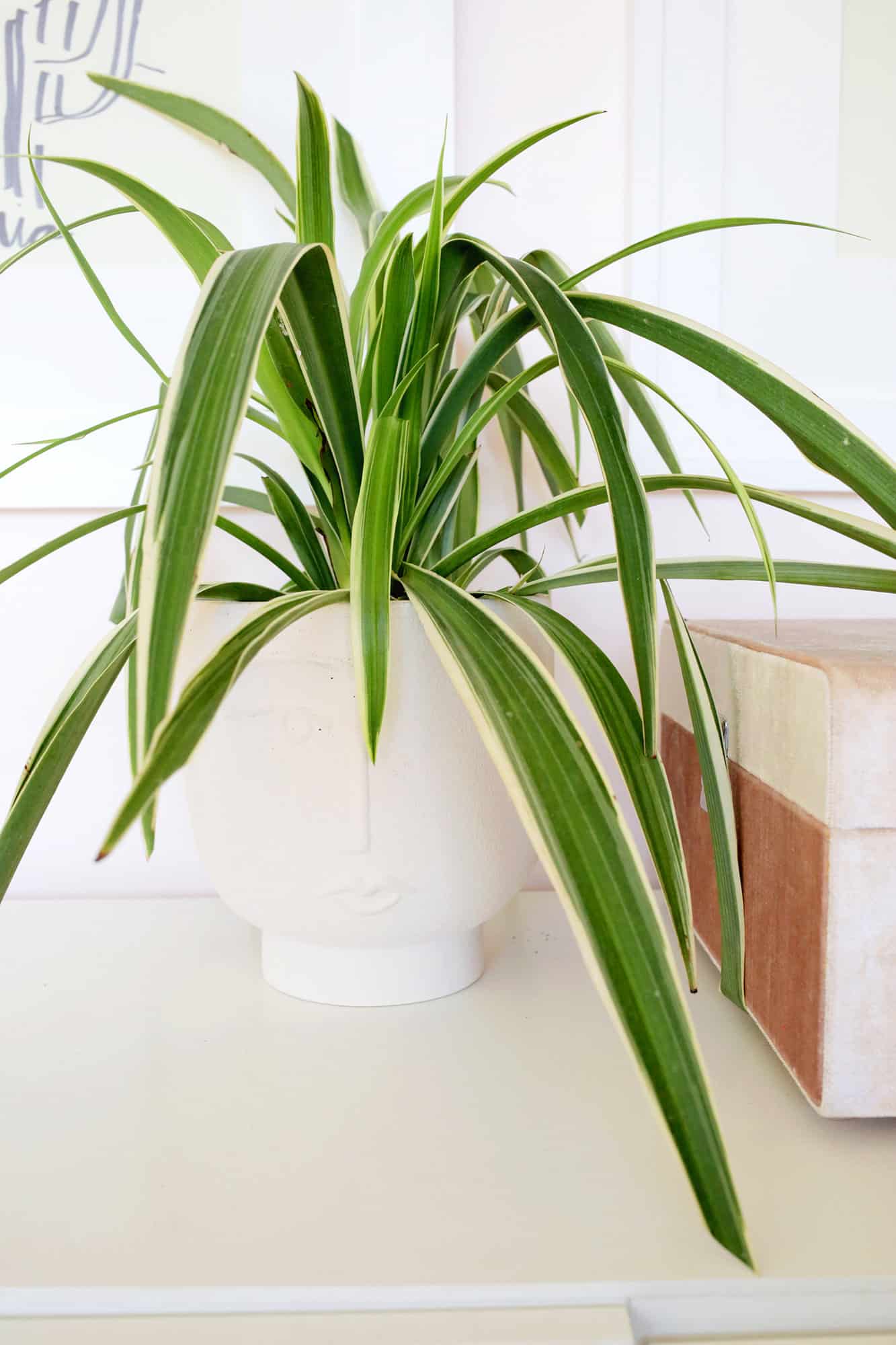
How Much Sunlight Do Spider Plants Need?
Spider plants can live indoors in low to bright indirect light. The stripes of the plant actually change and look more prominent when exposed to more sun, but you don’t want to place the plant in direct sunlight as that will burn and damage the leaves.
Outdoors spider plants prefer light shade but it is possible for them to do well in medium to heavy shade but they will grow slower with less light.
Should I Fertilize My Spider Plant?
You can use an all-purpose fertilizer on your spider plant during the spring and summer growing seasons. Just add some once or twice a month but be careful not to overdo it as that can hurt the plant.
Follow the directions on the label for guidance on how much to use and you can even start with half-strength to see how your plant does.
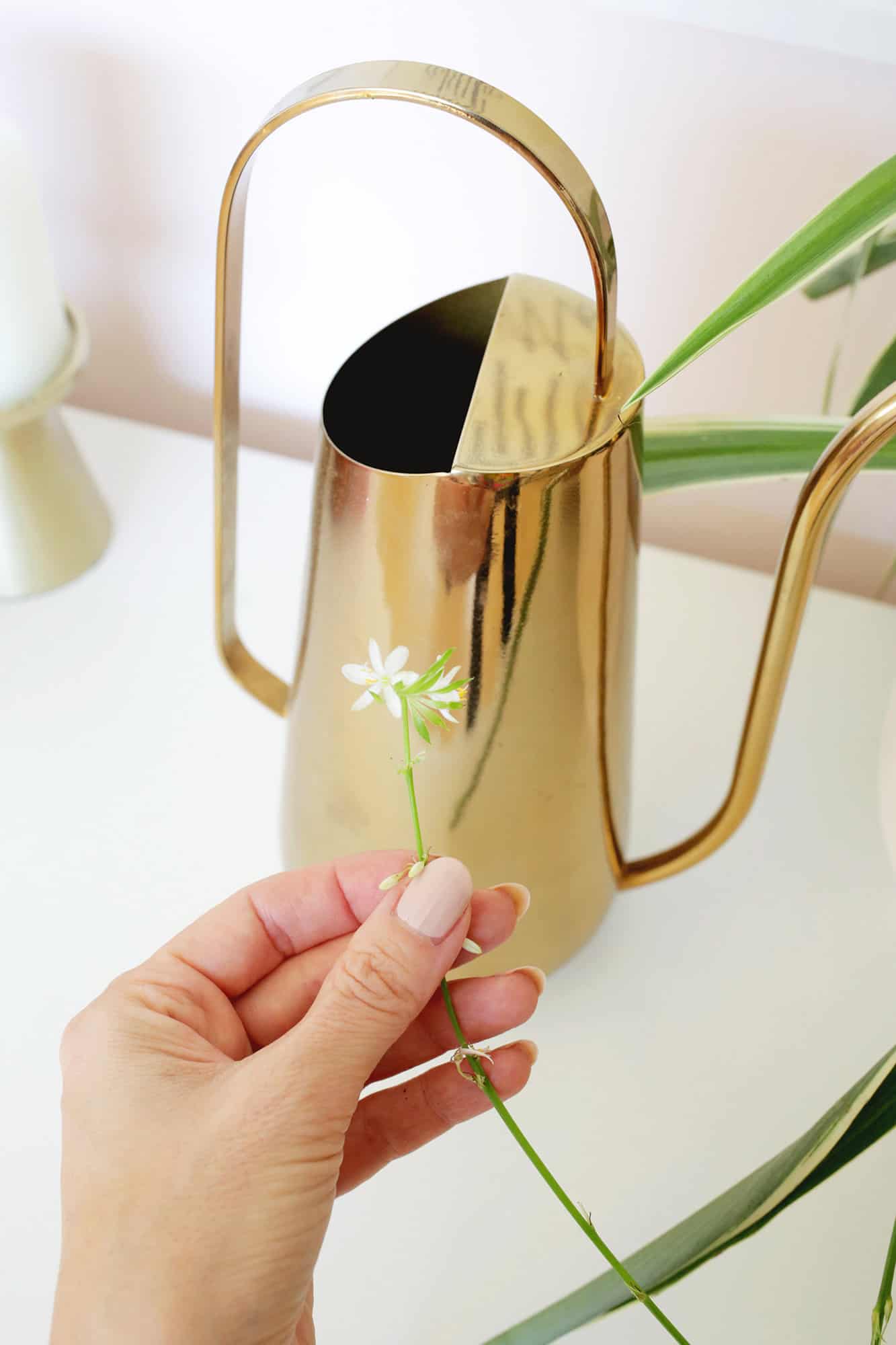
Temperature and Humidity for Spider Plants
Since spider plants come from a warmer more humid climate, they do best at temperatures over 50 degrees Fahrenheit. Keep them away from air conditioning vents and drafts if growing them inside.
Pruning Spider Plants
You can remove any brown tips as they appear by using sharp scissors or pruning shears to cut them off, but spider plants generally don’t need a lot of pruning.
Repotting Spider Plants
If you see your roots coming out of the drainage holes at the bottom of your container or up through the top of the soil, that means the root ball is getting too big and you’ll want to repot your plant.
Use a container that is 1/3 bigger than your root ball (ideally with drainage holes) and you can crumple up the root ball with your hands to break up any large knots of roots to encourage them to spread out in the new pot.
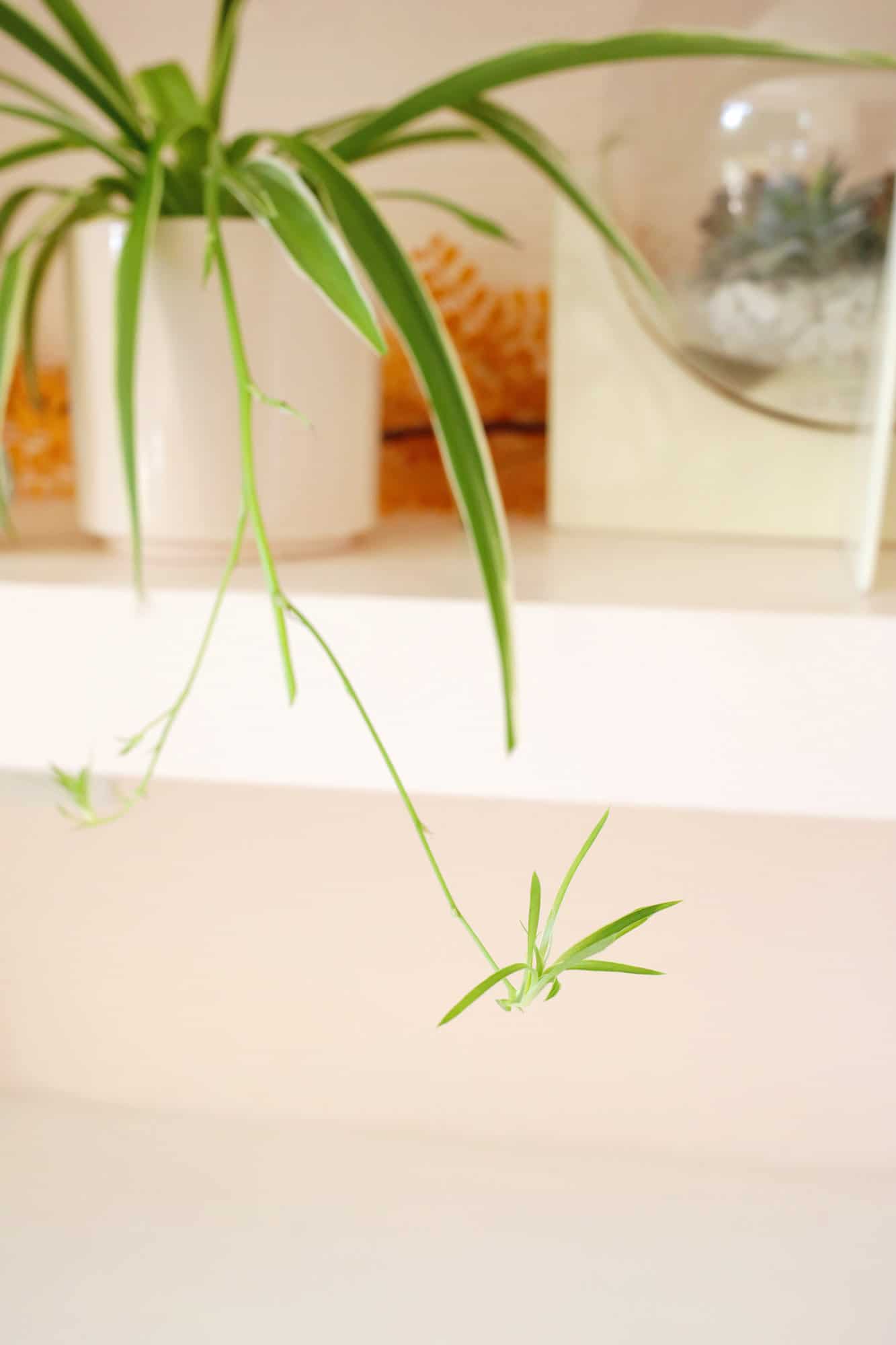
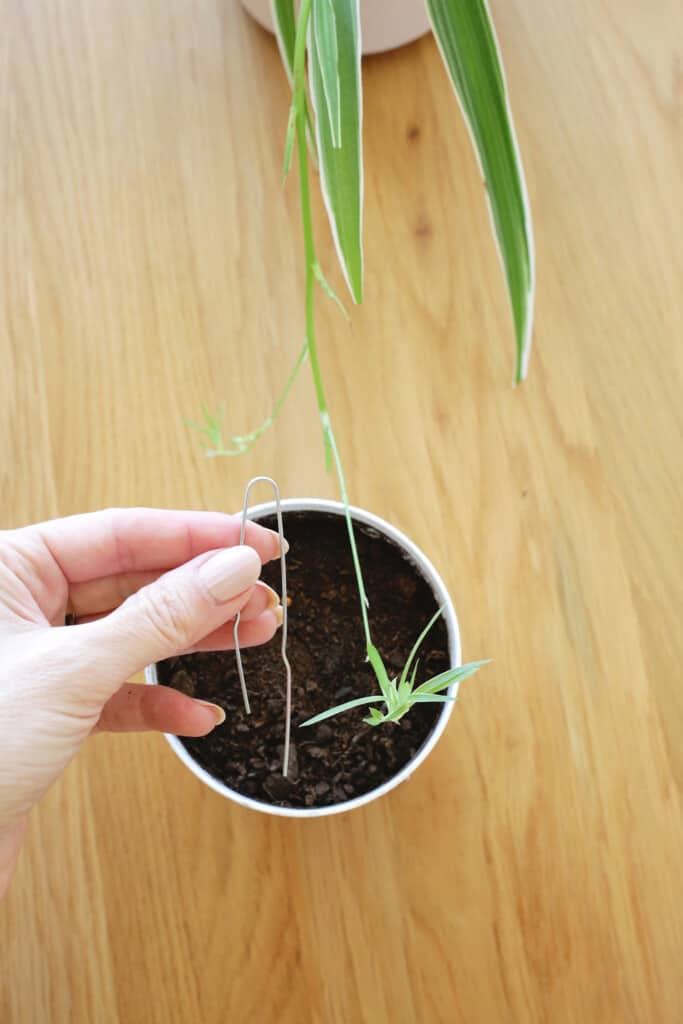

Propagating Spider Plants
The tiny spiderettes that grow at the end of a long stem not only give this plant its name, but also can be replanted to grow yourself some more spider plants!
You can wait until the spiderette has started to grow roots before cutting it off and planting in its own soil pot, but the best method is to allow the plant to still be attached to the mother plant while you start to propagate it.
Simply place a pot of soil near the mother plant and let the spiderette sit on the soil until it starts to develop roots and grow into the pot. You can use a wire bent into a “U” (or a paperclip unfolded) to push into the soil around the stem to keep it in place on the dirt.
Only mature plants with enough stored energy will produce spiderettes so not all plants are capable of making them.
Related: How to Propagate Plants

Diagnosing Common Problems
- Dry crispy tips: Could be a sign of underwatering, try and water more frequently or mist the plant weekly to keep the humidity up.
- Dark brown tips: Could be a sign of overwatering, let the soil dry more between watering. Can also be from fluoridated tap water so you can try distilled or rain water for a while to see if that helps.
- Pests: Spider plants are usually more pest-resistant but if you are getting aphids, whiteflies, and spider mites you can rinse the plant with water or use neem oil for bigger infestations.
FAQ
Frequently Asked Questions
Are spider plants safe for cats?
Spider plants are actually a favorite of veterinarians since they are safe for cats.
Should I cut the brown tips off of my spider plant?
If you are having issues with brown tips, you can cut the brown parts off of (they won’t turn green again) and then check to see if you are over or underwatering your plant as the root cause.
Should you mist spider plants?
Since the spider plants natural habitat is more humid, you can mist your plant once a week with a spray bottle and that will help keep it from drying out.
Do spider plants help clean the air?
Yes! NASA did a study that showed how they significantly help clean the air, but you’d have to have an extremely large amount of them in your home to really do the same thing.
